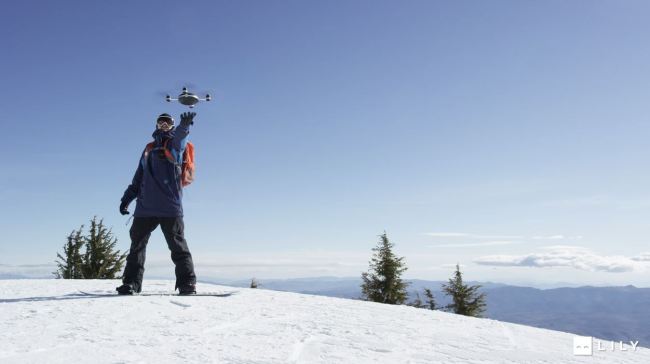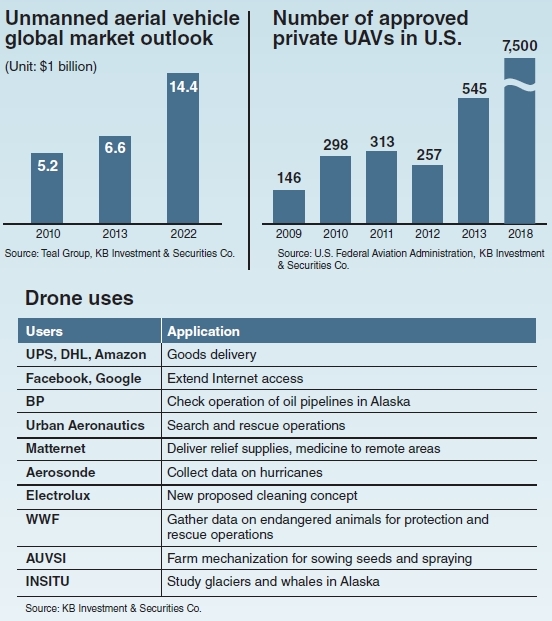 |
The Lily camera, once thrown into the air, chases after the person wearing its GPS tracking device. (Lily) |
In 2013, a team of robotics engineering students from the University of California, Berkeley set out to create the world’s first throw-and-shoot camera.
Lily, a GPS-oriented flying camera about to go on sale, can hover once thrown into the air, and chase whoever is wearing its tracking device while filming aerial shots in high-definition.
Lily is an advanced version of what has already been widely incorporated in broadcasting industries around the globe for some time.
In Korea, these remotely operated flying cameras are referred to as “helicams.” The name was coined during the pre-drone period when the industry attached cameras to helicopters for bird’s-eye view shots. As the use of helicopters fell out of fashion, drones have now taken on the industry jargon.
For some time now, broadcasting industries all around the world have been keeping close eyes on the use of unmanned aerial vehicles for filming. The technology is gaining momentum and advancing at an exponential rate, with almost all major TV stations using helicams in program production.
 |
Aerial shots of Firenze, Italy, taken by professional “helicam” operator Kim Dong-jin (AceHelicam) |
Kim Dong-jin, head of independent drone subcontractor AceHelicam, has been flying camera-mounted drones since 2012, where there were only 30 or so registered helicam filming businesses. The number has surged ninefold to reach approximately 280 in March.
“With the advancement of technology, it has become easier to operate the helicams. The old helicams were like riding a unicycle, but now they are so advanced that manipulation feels like riding a quad bike,” said Kim.
“However, flight malfunctioning from satellite glitches have become more prominent. Sometimes the GPS interception causes the helicam to stray off or fall, potentially risking serious damages.”
Despite the risks, the helicam business is a growing industry.
Drones can go into small spaces where helicopters couldn’t in the past. The movie industry has always sought after this technology to capture better shots,” said Kim Dae-kun, CEO of Helicam Co., who realized the potential of the market from early 2000, after seeing leading examples from the film industry in Hollywood.
As a professional model helicopter operator representing South Korea in the 1993 Austria World Championship and a student in film production, Kim took the initiative to collage the two fields, pioneering the helicam business in the nation.
“Although the drones are widely used in broadcasting in South Korea, their manufacturing is done elsewhere. China is a leading player in the market,” Kim said.
“However, that means competing with China, which isn’t easy. China has cheaper labor and the capability to deliver quality products.”
Trailing far behind China, which takes over 80 percent of the commercial drone market, South Korea is also attempting to boost its drone technology.

In March, the government announced a plan to fund 5.6 trillion won ($5 billion) to small and mid-sized enterprises in 19 future industries including drone research and develop by 2020, with hopes of raking tangible results by 2024.
“Science has always evolved to make life easier for humans. On land we’re developing robots to cover activities that are difficult or dangerous for people to carry out. As the robot industry advances, the helicam business will continue to expand,” Kim said.
By Lim Jeong-yeo, Hong Hye-jin (
kaylalim@heraldcorp.com) (honghyejin@heraldcorp.com)










